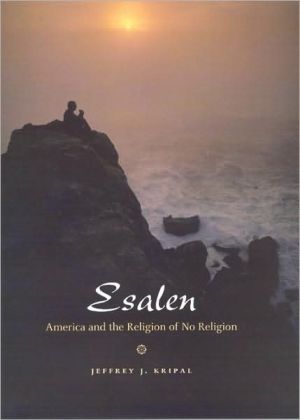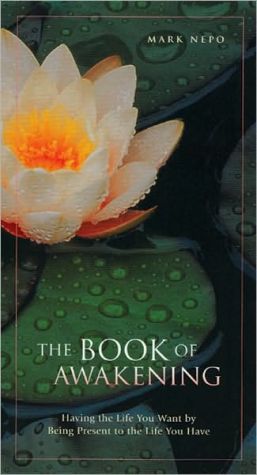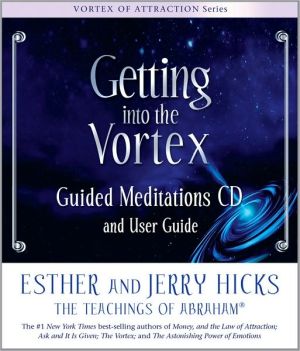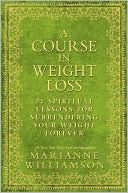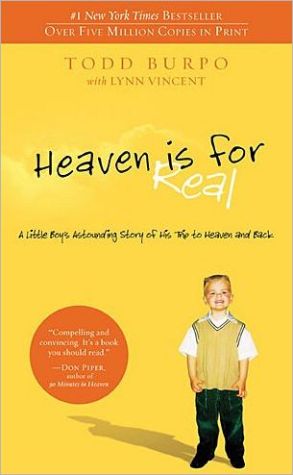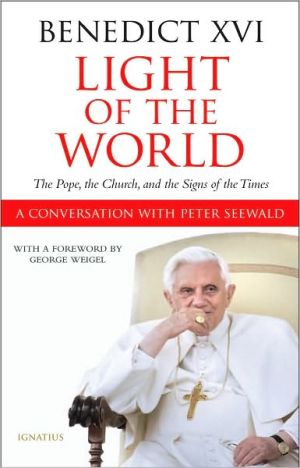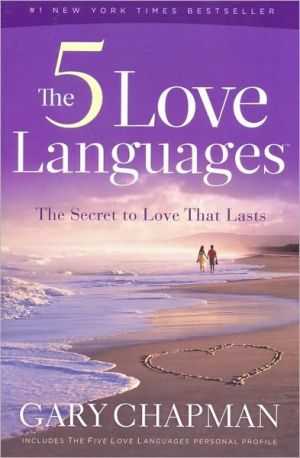Esalen: America and the Religion of No Religion
Jeffrey Kripal here recounts the spectacular history of Esalen, the institute that has long been a world leader in alternative and experiential education and stands today at the center of the human potential movement. Forged in the literary and mythical leanings of the Beat Generation, inspired in the lecture halls of Stanford by radical scholars of comparative religion, the institute was the remarkable brainchild of Michael Murphy and Richard Price. Set against the heady backdrop of...
Search in google:
Jeffrey Kripal here recounts the spectacular history of Esalen, the institute that has long been a world leader in alternative and experiential education and stands today at the center of the human potential movement. Forged in the literary and mythical leanings of the Beat Generation, inspired in the lecture halls of Stanford by radical scholars of comparative religion, the institute was the remarkable brainchild of Michael Murphy and Richard Price. Set against the heady backdrop of California during the revolutionary 1960s, Esalen recounts in fascinating detail how these two maverick thinkers sought to fuse the spiritual revelations of the East with the scientific revolutions of the West, or to combine the very best elements of Zen Buddhism, Western psychology, and Indian yoga into a decidedly utopian vision that rejected the dogmas of conventional religion. In their religion of no religion, the natural world was just as crucial as the spiritual one, science and faith not only commingled but became staunch allies, and the enlightenment of the body could lead to the full realization of our development as human beings. “An impressive new book. . . . [Kripal] has written the definitive intellectual history of the ideas behind the institute.”—San Francisco Chronicle “Kripal examines Esalen’s extraordinary history and evocatively describes the breech birth of Murphy and Price’s brainchild. His real achievement, though, is effortlessly synthesizing a dizzying array of dissonant phenomena (Cold War espionage, ecstatic religiosity), incongruous pairings (Darwinism, Tantric sex), and otherwise schizy ephemera (psychedelic drugs, spaceflight) into a cogent, satisfyingly complete narrative.”—Atlantic Monthly “Kripal has produced the first all-encompassing history of Esalen: its intellectual, social, personal, literary and spiritual passages. Kripal brings us up-to-date and takes us deep beneath historical surfaces in this definitive, elegantly written book.”—Playboy Publishers Weekly Many readers will probably not have heard of Esalen but that doesn't mean they won't find its history fascinating. Esalen is a legendary sacred place, but legendary among the privileged few like Aldous Huxley, Henry Miller and Joseph Campbell, for whom Esalen was a spiritual playground. Kripal, a professor of religious studies at Rice University, tells the story of this beautiful retreat in California's Big Sur region its history at once sexy, salacious, intellectual and political with reverence and playfulness, alternating between the hushed tones of awe and the glee of partaking in Esalen's infamous sinful delights. The community itself, Kripal explains, is centered around the idea of a "religion of no religion," which provides "a kind of American Mystical Constitution" for its visitors and "a spiritual space where almost any religious form can flourish." Kripal jumps among a wide range of historical moments, from Esalen's alleged relationship to the collapse of the Soviet Union to the idea of the disembodied erotic. Readers shouldn't be scared off by the book's heft. Kripal is an engaging storyteller, Esalen a worthy subject (a kind of Us Weeklyfor the discerning intellectual), and it's as easy to jump from the introduction to chapter 14 as it is to continue in order. (Apr.)Copyright 2007 Reed Business Information
Esalen\ America and the Religion of No Religion \ \ By Jeffrey J. Kripal \ University of Chicago Press\ Copyright © 2007 University of Chicago Press\ All right reserved.\ ISBN: 978-0-226-45369-9 \ \ \ \ Chapter One\ Slate's Hot Springs Homestead, Family Spa, Literary Paradise \ As to whether the sexual and the religious are conflicting and opposed, I would answer thus: every element or aspect of life, however necessitated, however questionable (to us), is susceptible to conversion.... The effort to eliminate the "repulsive" aspects of existence, which is the obsession of moralists, is not only absurd but futile. One may succeed in repressing ugly, "sinful" thoughts and desires, impulses and urges, but the results are patently disastrous. (Between being a saint and being a criminal there is little to choose.) To live out one's desires and, in so doing, subtly alter their nature, is the aim of every individual who aspires to evolve. Henry Miller, The World of Sex Likewise they created among themselves a peculiar mode of discourse by which they call the act of sexual union "the joy of Paradise" or, by another name, "the way to the heights" (acclivitas). And in this manner they speak of such a lustful act to others who do not understand it, in afavourable sense. indictment from the heresy trial of the Brethren of the Free Spirit (1411), in Wilhelm Franger's The Millennium of Hieronymus Bosch\ Esalen is on the edge. Located in Big Sur, California, just off Highway 1 on approximately one hundred and fifty acres of stunning natural beauty, Esalen is, geographically speaking, a cliff suspended about one hundred feet above the crashing surf and kelp-congested tides of the Pacific Ocean. By all measures, it is a stunning place, replete with natural beauty and a certain physical paradox, partly produced by the proximate presence of mountains and ocean; indeed, the rocky heights seem to drop directly into the watery depths here or, more true to the place's primeval geological history, it is as if the heights rise up out of the depths. Henry Miller called Big Sur "a religion where extremes meet." Indeed. The physical paradox of the land is deepened further by a simple, but somehow profound, historical and geographic fact: these, after all, are grounds that both constitute the very edge of the American frontier and look due west to see the East. Certainly Walter Truett Anderson had it right when he wrote, "If a place can have charisma, then surely this one has it."\ Little wonder, then, that Don Lattin began his recent history of the 1960s and the spiritual revolutions it wrought in the American soul with the appearance of the Esalen Institute. The place and its history are indeed mythical in that deeper symbolic sense of which historians of religion and mythologists speak, that is, as "founding story" or "world-defining narrative." The place has both heralded and significantly advanced for many the establishment of a new world of meaning, a new vision of human possibilities, a "New Age," even if few can quite agree on exactly what this newness means or how this age should be brought into more effective practice.\ What, then, is Esalen? The Esalen catalogs of the 1960s often included a brief mission statement at the back: "ESALEN INSTITUTE is a center to explore those trends in the behavioral sciences, religion and philosophy which emphasize the potentialities and values of human existence." A recent issue of the Friends of Esalen Newsletter defined it as "an alternative educational center devoted to the exploration of the human potential." That is all fair enough, but it hardly does justice to the place's richness, and it leaves begging the question as to how to define "the human potential." Just about everything hinges on that single telling phrase, first coined by George Leonard and Michael Murphy in 1965.\ How many times have I searched for some memorable sound bite to capture the essence of what Leonard and Murphy were after with those three words. It is surely significant that I have never found any, except perhaps for my little five-word koan or mystical riddle, "the enlightenment of the body." But alas, it will take me the rest of the book to perform such a paradox, so it is perhaps better to begin in the beginning, as it were, with the region's Amerindian and colonial histories and Esalen's more immediate origins in twentieth-century Big Sur literary culture.\ The Esselen\ The land itself is ancient, unimaginably older than any human habitation. Ten to fifteen million years ago the coastline was in fact some miles east of where it crashes now, at least until one of the area's infamous fault lines gave way and thrust up to the sky what Spanish settlers would call the Santa Lucia Mountains.\ Big Sur. The Big South. Already we are in the realm of an obvious linguistic and cultural hybrid, this one of English and Spanish colonial origins. Historically speaking, this hundred-mile stretch of coast running between Carmel and San Simeon was named after a river that has been flowing for over a million years. The native Americans who lived in the area called it the Jojopan. The Spanish renamed it El Rio Grande del Sur, the Big River of the South.\ Numerous Amerindian tribes, including the Costanoan, Rumsen, Salinan, and Esselen, lived along this mountain coast for thousands of years, probably moving back and forth from the coast and rugged inlands from season to season for fishing, hunting, and shelter. Burial sites have been discovered up and down the coast and dated with radiocarbon tests at about 3,000 years. Other sites, however, are far older. A skeleton recently found on Santa Rosa Island, off the Santa Barbara coast, has been dated at around 13,400 years old, and recent DNA tests with samples from Monterey County suggest a similar general period, leading scholars to speculate that the theorized early migrations from Siberia and the Asian Pacific coast across the Bering Straits and down the west coast of what is now Canada and the United States probably occurred earlier than previously expected. In any case, the archaeological point remains the same: the cultural origins of these original American cultures was originally an East Asian one. In other words, the East was here long before the West.\ Rock shelters, petroglyphs, and pictographs have been found in the area. Distinctive "hand paintings"-abstract forms that resemble striped ghostlike shadows of the human hand-are particularly striking and have recently entered the logo of the Esselen Tribe of Monterey County. Theories abound on their meaning. One of the most interesting involves an immense slab of sandstone that juts up near one of the main sites of the hand-paintings: it looks very much like a huge human hand.\ As for the Esselen themselves, local Big Sur legend has it that they used the very hot springs that are now enjoyed by Esalen's inhabitants, that they ate strange foods, mostly fruits and vegetables, and that they loved to go about naked. Some say the hand paintings are products of puberty initiation rituals involving the ingestion of local psychotropic plants. In other words, the Esselen were a bit odd in ways that uncannily resemble the habits of Esalen inhabitants today. Although there is good ethnographic evidence to suggest that the Esselen did at times go about naked, we are almost certainly dealing here with more of a wishful projection backwards than an accurate historical memory. The truth is that the Esselen are one of the least studied tribes of California, that we know very little about their culture, and that what we do know comes primarily from the letters and journals of early explorers, missionaries, and settlers.\ In any case, one thing is clear enough: Esalen was named after the Esselen. So too was much else. Michael Murphy remembers that, long before there was an Esalen Institute, the Murphys' Big Sur milk cow was named Essie and the local Boy Scout campgrounds was called Camp Esselen. It was actually Harry Dick Ross, a local Big Sur personality, who suggested to Price and Murphy that they name their dream after the Esselen Indians. There were certainly other possibilities. Murphy's grandmother wanted to call the grounds Tokitok Lodge after the alleged Esselen word for "the god in the springs" (tokitok). The very sound of the word causes Murphy to break into laughter over the term's weirdly appropriate English resonances (the baths are famously loquacious). He also notes a postcard from 1940 that actually carried the designation Tokitok Lodge.\ Michael Murphy's grandfather, Dr. Henry Murphy, believed that the meeting of three kinds of waters here (mineral, sea, and fresh) rendered the place nearly unique. In fact it was some kind of burial ground. Around fifty skeletons have been discovered over the years, primarily around the Big and Little House and up near the Middle-Point House, always buried in the fetal position and looking toward the sea. Michael Murphy believes the Esselen worshiped and buried their dead here because of the natural "power points" created by the meeting of these waters. As a boy Murphy remembers that the land was full of arrowheads, spear points, mortars, and pestles, and that its greasy dirt was difficult to wash off-it was composted over the centuries from thousands of abalone guts that the Esselen Indians had piled up here.\ As for the original Indian name itself, according to Thomas Roy Hester, "the rubric Esselen is probably derived from the name of a major village, perhaps Exse'ein or the place called Eslenes, which was the site of the San Carlos Mission. In any event, the early Spanish extended the term to include the entire linguistic group." We certainly do not know what the Esselen called themselves. Like so many other cultural designations-from "Christian" and "Hindu" to "American Indian"-these native peoples were originally named by others.\ The colonial past was a particularly cruel one for these native peoples. The first European contact appears to have occurred in 1602, when Sebastian Vizcáino visited the Amerindians of the Monterey area. When New Spain (Mexico) took control of California in 1770, these same peoples were Christianized, baptized, clothed, and acculturated into European ways. According to Breshchini and Haversat, the first direct historical reference we have to the Esselen occurs in a letter of Father Junípero Serra, dated August 24, 1774. It reads: "there are some who come from Eslen, called La Soledad, a place about halfway on the road between this mission and that of San Antonio, about twelve leagues distant from both." On May 9, 1775, Father Serra baptized the first Esselen as Mission San Carlos Baptism number 350, "a man about 40 years old, in danger of death, married, the headman of the territory of Excelen and its rancherias, named Pach-hepas." "I gave him the name Miguel Gregorio," Serra wrote.\ Sadly, however, Father Serra and his comrades were not simply baptizing the native peoples. They repressed their native beliefs and customs, eliminated their spiritual leaders, used them for hard labor, separated parents from their children, and, perhaps most disastrously, unwittingly infected them with multiple diseases for which they had no natural immunities. The Franciscans also attempted to impose a quasi-monastic lifestyle on their baptized converts. Women in the missions were often locked up each night after dinner to prevent any sexual activity. Some accounts even have the Spanish priests and soldiers forcibly segregating the natives by gender and imprisoning them in cagelike structures in order to effect a kind of slow generational genocide. Whatever the causes, most agree that the Mission Era (1770-1834) saw a 90 percent drop in population among the local tribes.\ In any case, between 1770 and 1803, estimates of the actual numbers of Esselen ran between 500 and 1300, although by most accounts no Esselen could be found in Big Sur by the time the place was homesteaded in the early 1880s. Alfred Kroeber, for example, estimated their numbers at five hundred in 1770 and zero by 1910 in his authoritative Handbook of California Indians. This is probably too pessimistic. The Esselen are not completely extinct. But neither do they any longer constitute an independent culture. Indeed, even their Web site more or less fuses their identities with the Ohlone and Costanoan tribal nations. By the time novelist Helen Hunt Jackson visited these populations in the early 1880s, most of the land had already been appropriated by the European settlers. Jackson asked the Bureau of Indian Affairs to protect the lands of the Monterey group, invoking the warning of a local parish priest who, speaking in code about a local rancher, had warned that the Indians "have their homes there only by the patience of the thief."\ Homestead, Vacation Home, and the Pacific Coast Highway\ This is all tragically true enough. But these are not the only truths. In the words of William Everson, "that California is little more than an American exploit, something taken from the Mexicans, and that strangeness and the exotic between them sum up its relevance to the national experience, can never constitute the way [the Californian] sees himself. Rather, he feels that his situation as term of the westward migration places him at the center, rather than on the periphery, of the American experience." Put succinctly, "the Californian knows that the expansiveness of attitude in the West is simply the well-known national expansiveness carried to its ultimate." And indeed, that is what Big Sur will become-the frontier of the frontier, if you will, the furthest edge of the spirit of the West. If the once wagon-wheel rutted Nebraska prairies where I grew up can be described on billboards and bumper stickers as the place "Where the West Begins," this California coast, where only the bravest and most hardy of the pioneers reached, can well be described as "Where the West Ends." This, in other words, was the final goal and destination of the American expansion and colonization of the West.\ A Missouri native named Thomas Benton Slate homesteaded the grounds of what is now Esalen in 1882, hence the local designation of the place until the early 1960s: Slate's Hot Springs. Local memory has it that Slate had actually arrived in the region in 1869, brought there by the already strong coastal reputation of the mineral springs. He had come from Santa Cruz to Big Sur in hopes of a cure for his painful arthritis; he came, in other words, to be healed. The Esselen were gone by this point, and the bubbling chemistry of the colorful hot springs-arsenic grays, soda whites, and lovely blue and red coppers-were already being used for their therapeutic promise. Perhaps they always had been.\ Slate owned the property for eleven years, finally selling it to the Little family in 1893. Tom Slate still lives on in memory and in the forms of the now immense nonindigenous eucalyptus trees that he planted on the grounds in the 1880s. The Little family was more successful still. They became prominent in Big Sur and now have a local state park named after their clan.\ In 1910, the Little family sold the property to Dr. Henry Murphy, a successful doctor from Salinas, who, according to local legend delivered half the town's population, including a certain John Steinbeck. Dr. Murphy dreamed of establishing a European-style health spa down the coast at his newly purchased property. In 1914 he had two large claw-footed bathtubs shipped via a Chinese fishing vessel to replace the previous tubs, which probably went all the way back to 1869.\ Transporting bathtubs were the least of their worries. Who, after all, could actually get to a remote cliff in good health, much less in bad? At this point, it was a three-day journey by horse from Salinas to Big Sur, not an easy feat even for the most fit and hardy. Thus the cultural future of Murphy's spa would depend almost entirely on a single and still future engineering feat: the building of the Pacific Coast Highway. Dr. Murphy would have to wait over two decades.\ The project began in the south, just north of Los Angeles around 1918, when the technology and engineering art of building bridges and roads had matured enough to venture up the winding coast of California. The crews started there and worked their way north. Although they met many dangers, and although death by burial in a landslide was both a constant possibility and an occasional grim reality, their greatest challenge in fact lay hundreds of miles ahead, in Big Sur. Dramatic canyons, steep cliffs, and a young, shifting geological environment made work extremely hazardous here. Beware indeed a coast with road sections that would win names like Rain Rock Cliff and The Devil's Slide or, for that matter, a state that would become known as "the theme park of disasters."\ (Continues...)\ \ \ \ \ Excerpted from Esalen by Jeffrey J. Kripal Copyright © 2007 by University of Chicago Press. Excerpted by permission.\ All rights reserved. No part of this excerpt may be reproduced or reprinted without permission in writing from the publisher.\ Excerpts are provided by Dial-A-Book Inc. solely for the personal use of visitors to this web site. \ \
Illustrations ixAcknowledgments, Sins, and Delight xiOpeningsIntroduction: On Wild Facts and Altered Categories 3Geographic, Historical, and Literary Orientations (1882-1962)Slate's Hot Springs: Homestead, Family Spa, Literary Paradise 27The Empowerment of the Founders (1950-1960)The Professor and the Saint: The Early Inspirations of Michael Murphy 47Buddhism, Breakdown, Breakthrough: The Early Inspirations of Richard Price 69The Outlaw Era and the American Counterculture (1960-1970)"Totally on Fire": The Experience of Founding Esalen 85Mind Manifest: Psychedelia at Early Esalen and Beyond 112Mesmer to Maslow: Energy and the Freudian Left 135Perls to Price: Consciousness and the Gestalt Lineage 157Esalen Goes to the City: The San Francisco Center 181On Ecstasy, Education, and the End of Sex: George Leonard and the Human Potential 202The Serpent Spine of Spirit and Sex: Don Hanlon Johnson and the Somatics Movement 222The Occult Imaginal and Cold War Activism (1970-1985)The Cosmic Womb: Stanislav and Christina Grof and the Counsels of Spiritual Emergence 249Golf in the Kingdom: Plato and Ramakrishna for Republicans 270Jacob Atabet and the Tantra of Physics 291Superpowers: Cold War Psychics and Citizen Diplomats 315Sex with the Angels: Nonlocal Mind, UFOs, and An End to Ordinary History 339The Tao of Esalen: The Spiritual Art and Intuitive Business of Managing Emptiness 357Crisis and the Religion of No Religion (1985-1993)The Religion of No Religion: The Donovan Era 383Realizing Darwin's Dream: The Transformation Project and The Future of the Body 404Before and After the Storm (1993-2006)After the Storm: Reassessment, Disaster, and Renewal 429(IN)Conclusion: The Future of the Past and the Mystical Idea of "America" 449Abbreviations 469Notes 471On Rare Things: The Oral, Visual, and Written Sources 521Index 535
\ Publishers WeeklyMany readers will probably not have heard of Esalen—but that doesn't mean they won't find its history fascinating. Esalen is a legendary sacred place, but legendary among the privileged few like Aldous Huxley, Henry Miller and Joseph Campbell, for whom Esalen was a spiritual playground. Kripal, a professor of religious studies at Rice University, tells the story of this beautiful retreat in California's Big Sur region—its history at once sexy, salacious, intellectual and political—with reverence and playfulness, alternating between the hushed tones of awe and the glee of partaking in Esalen's infamous sinful delights. The community itself, Kripal explains, is centered around the idea of a "religion of no religion," which provides "a kind of American Mystical Constitution" for its visitors and "a spiritual space where almost any religious form can flourish." Kripal jumps among a wide range of historical moments, from Esalen's alleged relationship to the collapse of the Soviet Union to the idea of the disembodied erotic. Readers shouldn't be scared off by the book's heft. Kripal is an engaging storyteller, Esalen a worthy subject (a kind of Us Weeklyfor the discerning intellectual), and it's as easy to jump from the introduction to chapter 14 as it is to continue in order. (Apr.)\ Copyright 2007 Reed Business Information\ \ \ \ \ Library JournalCalifornia's Esalen Institute is a center for alternative and experiential education that teaches that detachment is a universal impossibility. Founded in 1962 as a forum to new ways beyond mainstream academia, it avoids dogmatism of a single idea and instead embraces a wide range of philosophies, religious disciplines, and psychological techniques. In this history of the institute, readers will take a spellbinding journey through art, pop psychology, Tantric sex, Cold War physics, psychedelic drugs, and, of course, religion. Kripal (religious studies, Rice Univ.; Serpent's Gift) becomes a raconteur of stories involving a cast of characters--from folk singer Joan Baez and Gonzo journalist Hunter Thompson to gay bathers, Hell's Angels, and others attracted to the coast of California's Big Sur country. Kripal explains the institute's mixing of popular and political culture with the transformative spiritual practices of humanistic alternative education; its embodiment of East/West philosophies and dedication to the continual exploration of human potential. Upon finishing this book, readers will feel compelled to visit this remarkable place, where all are accepted. Compare with Walter Truett Anderson's The Upstart Spring: Esalen and the Human Potential Movement; for religious studies and academic collections.\ —L. Kriz\ \ \ \ San Francisco ChronicleAn impressive new book ... [Esalen] is, by many accounts, the birthplace of the human potential movement, which advocates the raising of spiritual consciousness, human functioning, mystical awareness, and interpersonal connection. [Kripal] has written the definitive intellectual history of the ideas behind the institute.—Don Lattin, San Francisco Chronicle\ — Don Lattin\ \ \ \ \ \ Playboy"Esalen Institute is a combination alt-think tank, academic community and sensual retreat perched on the Pacific-facing cliffs of Big Sur, California. Its thinkers formed the leading edge of American culture for decades. Here was ground zero of the 1960s social revolution: the sweaty hot-tub commingling of free love, tantric yoga, Buddhist meditation and Gestalt therapy—as well as the academy for the propagation of the human-potential movement. Outlaw all-stars like Aldous Huxley, Allen Ginsberg and Hunter S. Thompson felt the pull of the place. Now scholar Jeffrey Kripal has produced the first all-encompassing history of Esalen: its intellectual, social, personal, literary and spiritual passages. Kripal brings us up-to-date and takes us deep beneath historical surfaces in this definitive, elegantly written book."—Playboy\ \ \ \ \ Atlantic Monthly“Kripal examines Esalen’s extraordinary history and evocatively describes the breech birth of Murphy and Price’s brainchild. His real achievement, though, is effortlessly synthesizing a dizzying array of dissonant phenomena (Cold War espionage, ecstatic religiosity), incongruous pairings (Darwinism, Tantric sex), and otherwise schizy ephemera (psychedelic drugs, spaceflight) into a cogent, satisfyingly complete narrative. That he reconciles all this while barely batting an eye is remarkable; that he does so while writing with such élan is nothing short of wondrous. This essential volume achieves what Esalen itself ultimately couldn’t sustain: a true gestalt.”\ \ \ \ \ New Yorker"This history of the Esalen Institute describes how the Big Sur hot springs became a crucible for a brand of secular metaphysics known at 'the religion of no religion.' Founded in the early 1960s, Esalen drew eccentrics and artists like Aldous Huxley, Timothy Leary, Henry Miller, and Joan Baez, and soon became a sort of sybaritic commune, where life consisted, according to Kripal, of 'sodomy in the baths, glossolalia in the lodge, fistfights in the parking lot, folk music in the cabins, and meditation in the Big House.' ".—New Yorker\ \ \ \ \ Choice"Although several memoirs by participants and popular histories of Esalen and its creative role in American culture are available, this book is nothing less than the gold standard. Essential."\ \ \ \ \ The SixtiesI savored every page of this exquisitely crafted book. . . . Wisely, Kripal—having given the fairest and most comprehensive account of the Esalen story we will probably ever see—does not make any judgment.\ — Harvey Cox\ \ \ \ \ \ History of ReligionsKripal's documentary style is eminently suited to decribing the events and people that have made the Esalen Institute a place like no other. This makes his book an engaging read. . . . A well-crafted chronicle that will be of great interest to anybody curious about the emergence of the counterculture and of contemporary 'alternative' religion.\ — Olav Hammer\ \ \ \ \ \ Deepak Chopra“This is it: the definitive history of the original American human potential center and the people who first envisioned it and made it work. A truly astonishing story of spiritual inspiration, global vision, political adventure, and delightful humor, and just at the right time. A genuinely hopeful vision of what we yet could be in the mirror of what we have been. Stunning.”\ \ \ \ \ Robert B. Reich“In this engaging book, Jeffrey Kripal assesses one of the world’s most engaging places, and finds in Esalen a perfect metaphor for America’s unique creed of science and religion. Here—literally on the western edge of the North American continent—the European enlightenment meets Asian spirituality, Einstein confronts Walt Whitman, Calvinism takes on mysticism, and secularism encounters the divine. It’s a wild ride, filled with ironies and tensions, but it’s also America at the start of the twenty-first century, and perhaps the future of the world.”\ \ \ \ \ San Francisco Chronicle"An impressive new book ... [Esalen] is, by many accounts, the birthplace of the human potential movement, which advocates the raising of spiritual consciousness, human functioning, mystical awareness, and interpersonal connection. [Kripal] has written the definitive intellectual history of the ideas behind the institute."—Don Lattin, San Francisco Chronicle\ \ \ \ \ The Sixties"I savored every page of this exquisitely crafted book. . . . Wisely, Kripal--having given the fairest and most comprehensive account of the Esalen story we will probably ever see--does not make any judgment."\ \ \ \ \ History of Religions"Kripal's documentary style is eminently suited to decribing the events and people that have made the Esalen Institute a place like no other. This makes his book an engaging read. . . . A well-crafted chronicle that will be of great interest to anybody curious about the emergence of the counterculture and of contemporary 'alternative' religion."\ \
